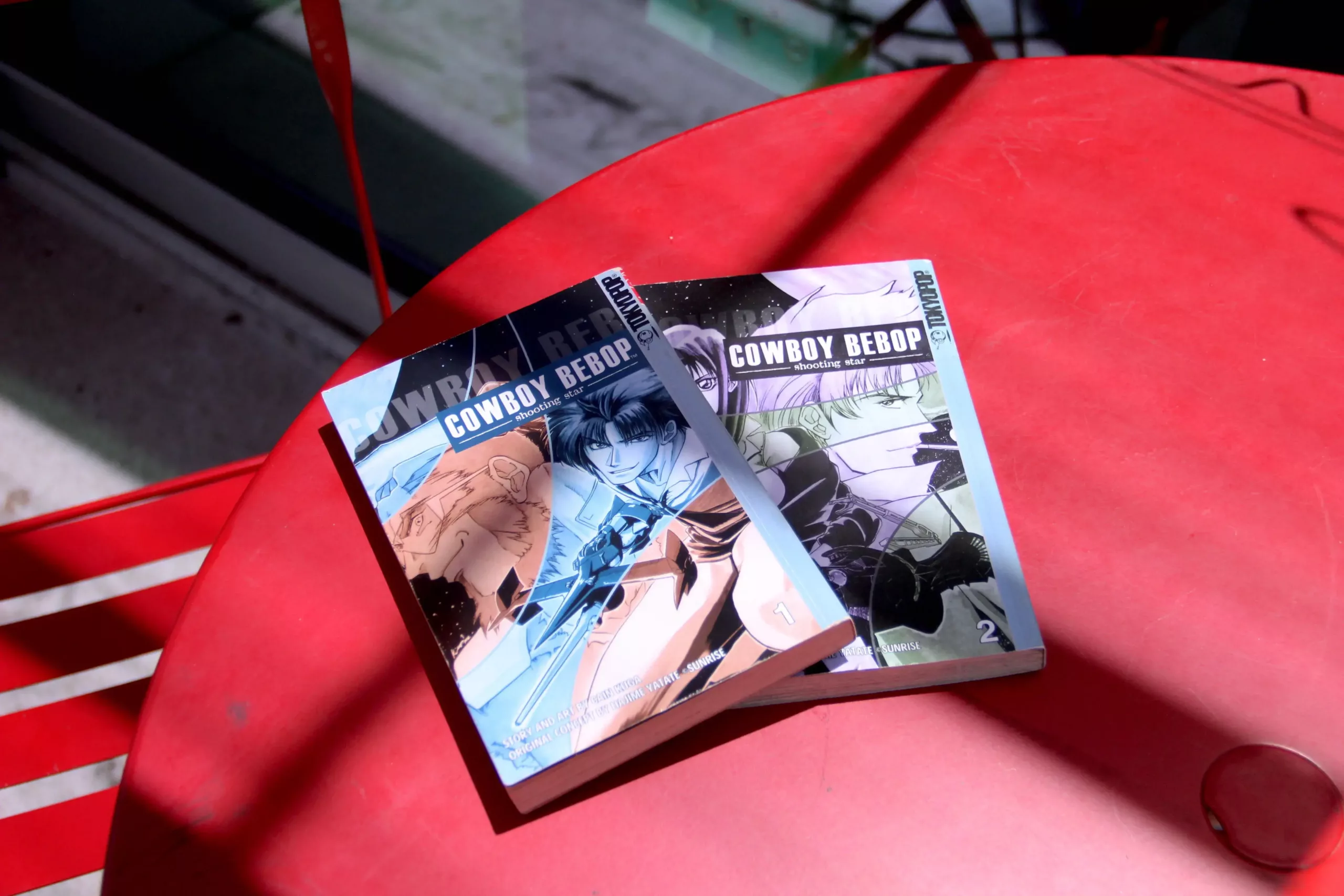

As an Amazon Associate, we earn from qualifying purchases.
“Girl, Interrupted” by Susanna Kaysen offers a first-person perspective on a young woman living with mental illness stigma brought on by herself and the people around her. This book feels like a blast from the past (to be expected, given it was written in the 90s about her life in the 60s). Old school approaches to the discussion about mental health can be observed primarily through Susanna Kaysen’s own judgment about her borderline personality disorder (BPD). As dated as “Girl, Interrupted” may be, it gives the audience a solid foundation as to how far (and even how little) topics regarding mental health have developed.
“Girl, Interrupted” has been made into a major motion picture by Columbia Pictures in which Winona Ryder plays the author and Angelina Jolie plays her friend and fellow inpatient, Lisa Rowe. What the movie fails to do, the book exceeds in (and vice versa). If you’re looking for a solid retelling about a particular time living in a psych ward, then this is the book for you. If you’re looking for something that gives more detail to the world surrounding the book and its characters, then the movie is right for you.
Many young women spend time in their early adulthoods forming opinions on their mental well-being. We read plenty of Susanna Kaysen’s, but what about the other souls trapped with her? Does writing about a personal hot-button issue negate a lack of understanding of the young women who stand right beside you? In this “Girl, Interrupted” book review, we’ll explore these questions.
Want more relatable novels? Read our best novels about depression book list.
‘Girl, Interrupted’ Book Summary: A Young Woman’s Battle With Borderline Personality Disorder and Stay in a Psychiatric Hospital
At the beginning of the novel, we see a young woman from Massachusetts, Susanna Kaysen, a recent high school graduate with no discernable plan for her future. She attempts suicide by swallowing a full bottle of Aspirin. Given her seemingly reclusive nature, her family has her committed to Claymore, a mental institution outside of Boston, to treat her for “borderline personality disorder.”
As her stay prolongs, she contemplates all the facets of her life that led her there. From academic contrarianism to having an affair with her English teacher, Kaysen doesn’t hold back on her inconsistencies. She toggles with her belief that she’s essentially a black sheep to everyone around her to being delightfully different. Given that one of the key aspects of BPD is having a distorted sense of self, it begs the question whether or not Kaysen was aware of her own double standards.
The movie would convey to audiences that “Girl, Interrupted” is the female “One Flew Over the Cuckoo’s Nest.” But, alas, it’s not. It’s much more grounded (even if Kaysen’s description of head nurse Valerie is synonymous with the infamous Nurse Ratched). Nonetheless, this self-told (at times indulgent) story has a small amount of grit to keep the audience intrigued.
You may also like “The Bell Jar” by Sylvia Plath.
At The Rauch Review, we care deeply about being transparent and earning your trust. These articles explain why and how we created our unique methodology for reviewing books and other storytelling mediums.
‘Girl, Interrupted’ Audience and Genre: Nostalgic Memoir, Mental Health and Feminism
The audience, in theory, is every single human being in touch with any of their feelings. This book is a reminder that life is very messy, and that we’re all trying to get along to get on. Readers of mental health-related books and feminist literature may be more drawn to this title.
As a coming of age story, “Girl, Interrupted” may be particularly interesting to young women on their path of discovering themselves and building a sense of self.
Three Cs: Compelling, Clear, Concise
Editorial Note: We believe these three factors are important for evaluating general writing quality across every aspect of the book. Before you get into further analysis, here’s a quick breakdown to clarify how we’re using these words:
- Compelling: Does the author consistently write in a way that would make most readers emotionally invested in the book’s content?
- Clear: Are most sentences and parts of the book easy enough to read and understand?
- Concise: Are there sections or many sentences that could be cut? Does the book have pacing problems?
Compelling: Her Characters Are Distinct But Predictable
Throughout the book, Kaysen’s struggle is clear to follow, but fails to be compelling enough on its own to finish the memoir. Each character Kaysen introduces to us has a distinct characteristic (majority of the time, their diagnosis) we remember them by. Each character harkens to a female version of characters from “One Flew Over the Cuckoo’s Nest,” like Polly serving as a female Billy Bibbit.
Clear: Readable Even For Those Who Could Care Less
Susanna Kaysen does a good job at giving the reader enough context into her life to ask themselves what they would do in her situation. Structurally, it was written with clear directives.
Concise: Fast-Paced But At a Price of Less Showing
“Girl, Interrupted” has a clear structure that doesn’t go on prolonged tangents. Kaysen navigates the reader through essentially quick summaries into the people she’s surrounded by in the psychiatric ward, as well as those around her outside of it. The book is thirty-five chapters long with a total of 156 pages. Chapters are often short, leaving us wanting more exploration.
Read the best mental health books to get recentered.
Character Development: Distant Strangers Plague The Novel, Leaving Us Wanting More
The most developed character in this novel, without question (or surprise) is Susanna. This is unequivocally her story (and she knows it). Her constant back-and-forth with her outlooks on life is captivating enough to see how she transitions into a woman ready to tackle the world after her release. The rest of the young women are left in the dust.
Granted, given that this is Susanna’s story, we don’t need to see the other character’s lives fully drawn out. But, in comparison to Susanna, the other women in the ward felt like strangers being viewed at a distance. Perhaps this narrative was intentional. Perhaps one could interpret this perception as how we, collectively, keep our distance from people we deem as “dangerous.” Given that this theory isn’t strongly highlighted by Susanna, the development of these characters fall short.
Story: We See A Typical Story of the Old-Fashioned ‘Misunderstood’ Person Who Suffers From Mental Illness and ‘Gets Better’
The story is rather predictable. Yes, it’s a memoir, but it doesn’t feel like a book that opens up too much into the complexities of an individual. From the beginning, we see Susana describe how she comes to end up at Claymore and her resistance to it. She goes back and forth from accepting her fate to denying, actively keeping the reader in a state of heightened confusion.
Granted, it’s appropriate to deduce that this confused narration is intentional, given her condition. People with BPD are typically those who struggle with maintaining a consistent sense of self. As the novel progresses, Susanna seemingly becomes aware of her own faulty sense of self, but we never get a clear conclusion as to whether or not she cares to do something about it. There is no cure for BPD, but by the end of the novel the reader gets the impression that she’ll more than likely figure it out as she goes along.
I started to lose interest, but the encounter with Lisa after her release is a pivotal scene. It gives us an understanding as to how Susanna looks back at her year and a half long stay at Claymore without the mundane rehashing.
‘Girl, Interrupted’ Prose Style: Direct and Approachable
Kaysen’s writing is direct and leaves very little room for the imagination. The reader can easily identify how she’s feeling throughout her time there. Kaysen describes the events with sharp precision and under the assumption that the reader can come to their own conclusions or judgments of what they would do if they were in her shoes.
‘Girl, Interrupted’ Setting: A Mental Hospital Plagued With Traditional Values That (Even to This Day) Serve No One in It
In the memoir, Susanna describes life growing up in Belmont, Massachusetts, primarily the social stigmas people around her plagued her with. She doesn’t shy away from the victim role she’s taken on, blaming the environment around her for her rebellion.
At Claymore, she is a prisoner trapped in a “fascist torture chamber” (as Winona Ryder says playing her in the movie). Despite this statement, the setting is broken down in very matter-of-fact pinpoints. The need to lure the audience into the emotional reality of Claymore is seemingly sacrificed. We get a view of how claustrophobic Claymore is, which heightens the reader’s feelings of wanting to get out. But that detail could have been explored more.
Rhetoric: The Neurodivergent Urge to Overexplain, Personified
Throughout the novel, Susanna goes in depth with her view on the world. We see how her mind goes from point A to point B to point Z. Given that, in recent years, BPD falls under the umbrella of neurodivergence (a la autism and ADHD), her diagnosis begs the question of which of her thoughts are genuine and which are bouts of stream-of-consciousness.
For example, she talks about how when she and the other residents in Claymore would hear of events that would go on outside Claymore, she would feel as if she had seen it happen in front of her there. This idea Kaysen has about Claymore being the “parallel world” leaves the discussion of whether or not one becomes desensitized to that way of life. If she is indeed desensitized, who is to say her perspective is rooted in logic.
Cultural and Political Significance: This Book is the Ghost of Christmas Past of Mental Health-Related Memoirs
“Girl, Interrupted” is an astute reminder of the stigmatization of mental health, and offers an insight from someone dealing with it themselves. Compared to the 1960s, society has made progress. During this time, homosexuality was classified as a mental disorder in the DSM. We’ve come leaps and bounds revamping the medical industry and its placeholders for what makes a mental disorder classified.
Nonetheless, BPD is still dealing with an onslaught of bad PR. The negative tropes of BPD, such as manipulation and emotional irregularity, are blasted in media representations, and BPD’s legitimacy is still called into question today. The question remains whether or not Susanna Kaysen’s novel positively or negatively contributed to the conversation.
You may also like “A Tale for the Time Being” by Ruth Ozeki.
Authenticity: We See Susanna in Her Good, Bad and Ugly
Susanna presents herself seemingly unfiltered, which is necessary when writing a memoir. No one is interested in surface-level personal writing. One thing no one can accuse Susanna of doing is holding back on herself. She offers herself on a silver platter (or a pig ready to be roasted) for the reader. Her complexity in her understanding of her BPD is satisfying to witness.
Critiquing the Critics: Not Enough Criticism of This Book?
In terms of criticism, this book is universally loved. Many readers praise this memoir for being a short yet effective look into mental health, not only within the time period. It reflects a perspective that is seemingly universal.
I can’t help but critique it, given that, within my Millennial generation, people have often trivialized mental health and have even used mental illness, like BPD, as social media trends, thus downplaying the serious nature of it. Most of the critiques I’ve seen compliment the structure of the memoir, stating Kaysen gets to the point and doesn’t write in “flowery” terms. While Kaysen doesn’t do that, she sometimes oversimplifies her feelings, which come at the cost of looking at nuance within BPD.
‘Girl, Interrupted’ Book Aesthetic: A Visual Representation of BPD?
The cover (for the 30th anniversary edition I read) gives the reader a visual cue as to what’s to come. The left side is blue with a portrait of Kaysen, while the right side shows us Kaysen in a white highlight. The juxtaposition of these two colors is representative of borderline personality disorder and how those who live with it perceive things in a black and white matter (as some could interpret it).
‘Girl, Interrupted’: Book vs. Movie
The film, by far, is presented more as a coming-of-age story than an account from a mental patient. The film goes beyond to present Susanna as a misunderstood teenage girl with emotional issues (a “little girl” as Whoopi Goldberg, playing Valerie, calls her). The film presents Susanna as the sanest person in the ward, with the others played as insane on another level. That’s not to say that they all aren’t given nuance, but it’s clear that Susana is meant to be our protagonist. Given Winona Ryder’s reputation playing the misunderstood girl trope, it’s not hard to imagine why.
There are liberties with the plot, such as Susanna and Lisa Rowe escaping the ward and running to Daisy’s house. Also, the conclusion where Susanna tells Lisa she’s “dead already” is completely made up in the film. To me, the film tries to make mental health “edgy” or “rare” instead of portraying it in a way that offers hope and compassion.
Reviewer’s Personal Opinion: Susanna Kaysen Walked So the TikTokers Could Run
While Susanna Kaysen’s book does a great job establishing a footing to study mental health via literature, it felt very surface-level. The popularity of the novel (and subsequent movie) has been partially responsible for shaping how we view mental health. Given the time period it was written, it does do what many others were afraid to do: humanize mental health. Kaysen gives readers a glimpse into the mind of those affected by mental health, but it can go further.
Many terms within the mental health space have changed and been adapted over the past few decades. We have new spaces for those affected by mental illness to connect and share commonality. Kaysen’s account, although dated, is a good surface-level exploration, and I appreciated her willingness to share her thoughts.
‘Girl, Interrupted’ Review: 4 out of 5 Stars for a Slightly Overrated Classic
In this “Girl, Interrupted” review, we find that Susanna Kaysen’s memoir is a poignant memoir for its time, and a solid basis for how we view mental health today. Over the course of the 21st century, our depictions of mental health can lean into authenticity more and more.
‘Girl, Interrupted’ FAQs
What is ‘Girl, Interrupted’ about?
‘Girl, Interrupted’ is a memoir by Susanna Kaysen in which she recounts her experiences in a psychiatric hospital in the 1960s after being diagnosed with borderline personality disorder (BPD).
What genre is ‘Girl, Interrupted’?
‘Girl, Interrupted’ falls under the genre of memoir and psychiatric literature, exploring mental illness and institutionalization.
What happened to Daisy in ‘Girl, Interrupted’?
Daisy, one of the patients in the hospital, tragically dies by suicide after being released from the institution and living alone.
What happened to Polly in ‘Girl, Interrupted’?
Polly, another patient in the hospital, suffers from severe burns after setting herself on fire and struggles with her appearance and mental health throughout the story.
What happened to Susanna in ‘Girl, Interrupted’?
Susanna, the narrator, eventually leaves the psychiatric hospital after an 18-month stay and continues her journey toward understanding and managing her mental health.
What disorders did the characters have in ‘Girl, Interrupted’?
The characters in ‘Girl, Interrupted’ have various mental health conditions, including borderline personality disorder, schizophrenia, obsessive-compulsive disorder, and depression.
When was ‘Girl, Interrupted’ written?
‘Girl, Interrupted’ was written in 1993 by Susanna Kaysen and reflects her experiences from the 1960s.
What is the point of ‘Girl, Interrupted’?
‘Girl, Interrupted’ examines the complexities of mental illness, societal expectations, and personal identity, while questioning the boundaries between sanity and madness.
Is ‘Girl, Interrupted’ a classic?
Yes, ‘Girl, Interrupted’ is considered a modern classic, especially in the genres of memoir and mental health literature.
Buying Options
E-Commerce Text and Audio Purchases
E-Commerce Audio Only
Physical Location Purchase and Rental Options
The book can be found in-person or online through various retailers, such as Amazon, Barnes and Noble, Walmart, eBay, etc.
Get recommendations on hidden gems from emerging authors, as well as lesser-known titles from literary legends.






